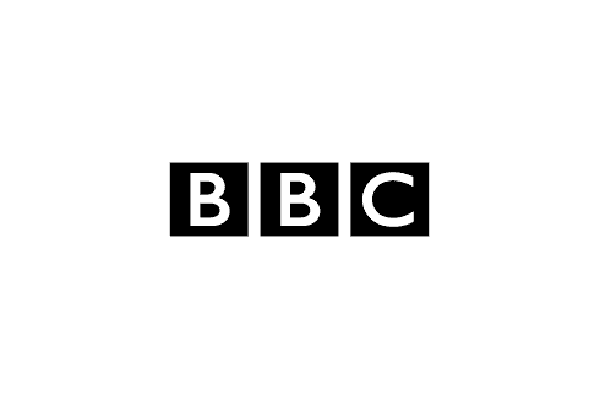Some bank accounts may require a minimum balance to avoid fees. Ensure that the minimum balance requirement is reasonable and achievable for the teenage account holder.
- >
- Current Accounts>
- Bank accounts for teenagers
Compare bank accounts for teenagers
Find our best bank accounts for teenagers
What is a bank account for teenagers?
Bank accounts for teenagers are current accounts specifically designed for 11 to 17-year-olds.
Unlike children's bank accounts, which usually require an adult to open the account for the child, most banks allow teenagers to open their own accounts if they're at least 16 years old.
Once you’re 18, you can switch to a standard bank account designed for adults. A teen bank account is a helpful stepping stone between a child's account and a teenager bank account because it offers a bit more freedom and helps to build confidence for managing an adult current account.
The main difference between standard accounts and teen accounts is that even the best teenager bank accounts don't offer overdrafts because you have to be at least 18 years old to be eligible to take out any form of credit.
Why would a teenager need a bank account?
Opening a bank account introduces teenagers to the practical aspects of money management. It provides them with a platform to learn about income, expenses, and budgeting. And by making regular deposits, withdrawals, and tracking their account balance, they develop essential financial skills that will serve them well throughout their lives.
By experiencing first hand how their financial decisions impact their account balance, teenagers can make mistakes in a controlled environment. These learning opportunities can be invaluable as they prepare to handle more significant financial responsibilities, such as paying for university life or managing their own household.
How to find the best bank account for teens
Research local banks and building societies
Compare bank accounts
Consider accessibility
Review parental controls
How to open a bank account for teenagers
Application processes vary slightly between banks but will broadly have the same steps and document requirements.
Teenagers who are 16 or older can open most accounts themselves. You can open some accounts yourself from the age of 13. You’ll need to:
Apply online, providing proof of ID, such as a UK passport, and usually proof of address, such as a letter from your school or a bank statement from an existing account. You might be asked to provide evidence of your address for the last three years
If your identity can’t be verified online, go into a branch with your identity and proof of address documents
If you don’t have your own documents that can prove your identity, you may need to apply with a parent or guardian using theirs
Some accounts let you apply in a branch if you prefer. In some cases, you’ll still need to apply with a parent or guardian if you’re 16 or over.
If you’re under 16, you’ll usually need to apply with a parent or guardian in a branch or start the application online and then go to a branch with them. They may need to show their own proof of identity and address documents. With some banks, your parent or guardian will need to have a current account with them for you to apply for an account.
What features can you get with a bank account for teenagers?
Teenage bank accounts designed for 11 to 17-year-olds have many of the same features you see in bank accounts for over-18s, although some may only become available once you reach a certain age.
The things you can do with most teen accounts include:
Deposit money into the account, including wages, money from other people sent by bank transfer, cheques, and cash
Pay by debit card in person, online or by phone, or make contactless payments using your mobile phone in person
Withdraw money at a cash machine using your debit card or a cash card
Set up automatic payments like direct debits and standing orders to cover bills
Manage your account online through your bank's website, mobile app, or telephone banking
Check your statements online or set up a payment to a person or company
Earn interest on your balance
Pay by Apple Pay or Google Pay – if you have the right kind of device
Receive text alerts or smartphone notifications about your account
Pay someone near you without their bank details
Transfer the change from a rounded-up payment into a savings account
Open a specific savings account that offers relatively high interest
Freeze and unfreeze your card through the app if you misplace it
However, the features on offer vary between accounts, so it's important to ensure the account you choose has the features you need.
What protections do bank accounts for teenagers offer?
Bank accounts designed for teenagers offer various protections and features to allow young individuals manage their finances while protecting their financial wellbeing. Common protective features associated with teen bank accounts include:
Parental oversight: Many teen accounts require parental or guardian consent and involvement. Parents or guardians typically have access to view the account, set spending limits, and provide guidance to ensure responsible money management.
Age-appropriate access: Teen accounts are tailored to the age of the account holder, ensuring that the features and access provided are appropriate for their stage of financial development.
No overdrafts: Teen accounts do not allow overdrafts, which means the account holder can’t spend more money than is available in the account. This prevents the accumulation of debt and interest charges.
Financial education: Some teen accounts include financial education resources to help young account holders learn about budgeting, saving, and responsible money management.
Fraud protection: Teen accounts come with standard fraud protection measures, such as the ability to dispute unauthorised transactions.
Parental notifications: Parents or guardians may receive notifications or alerts about account activity to stay informed and ensure responsible spending.
Parental control: Parents or guardians may have the ability to block or approve specific types of transactions, such as online purchases or ATM withdrawals, to manage their child's spending.
No or reduced fees: Many teen accounts have lower fees than standard current accounts to make banking more affordable for young users.
Specific protections and features of teen accounts may vary among different banks and financial institutions.
Parents and teens should therefore compare the offerings of the different teen accounts available carefully to ensure they choose one that aligns with their financial needs and educational goals.
What to look out for with a teenage bank account
Minimum balance requirements
Some bank accounts may require a minimum balance to avoid fees. Ensure that the minimum balance requirement is reasonable and achievable for the teenage account holder.
Fees
Be aware of any charges associated with the account, which could include monthly fees, overseas withdrawal fees, and fees for unpaid transactions (because the account balance is below £0). Look for accounts with minimal or no fees, especially for teenagers with limited funds.
Accessibility
Consider the availability of ATMs and branches. A bank with a widespread ATM network can be more convenient for cash withdrawals.
Security
Ensure that the bank offers strong security measures to protect your or your teenager's account information and funds.
Parental involvement
Stay involved in your teenager's financial journey. Monitor their account regularly, especially if it's a joint account, and use this as an opportunity to teach them about responsible money management.
Customer service
Consider the quality of customer service. You'll want a bank that can assist you or your teenager promptly and efficiently, especially if they have questions or encounter issues.
What to look out for with a teenage bank account
Minimum balance requirements
Fees
Be aware of any charges associated with the account, which could include monthly fees, overseas withdrawal fees, and fees for unpaid transactions (because the account balance is below £0). Look for accounts with minimal or no fees, especially for teenagers with limited funds.
Accessibility
Consider the availability of ATMs and branches. A bank with a widespread ATM network can be more convenient for cash withdrawals.
Security
Ensure that the bank offers strong security measures to protect your or your teenager's account information and funds.
Parental involvement
Stay involved in your teenager's financial journey. Monitor their account regularly, especially if it's a joint account, and use this as an opportunity to teach them about responsible money management.
Customer service
Consider the quality of customer service. You'll want a bank that can assist you or your teenager promptly and efficiently, especially if they have questions or encounter issues.
Bank accounts for teenagers vs prepaid cards
Bank accounts
Bank accounts offer teenagers access to a broader range of financial services and tools than they would get with a prepaid card. With a bank account, they also gain exposure to more advanced financial concepts, such as paying bills and saving up for a big-ticket item.
However, bank accounts often have more fees and minimum balance requirements than prepaid cards, which can be challenging for teenagers who may not have a stable income.
Prepaid cards
Prepaid cards can be a simpler and more convenient choice for teenagers. Also known as prepaid debit cards, they work like regular debit cards but are not linked to a traditional bank account – meaning they need to be loaded with cash, typically direct deposits, or online transfers.
These cards offer a degree of financial responsibility. However, teenagers can only spend the amount loaded onto the card, making it a useful tool for budgeting and controlling spending.
FAQs
Can a teenager get an overdraft?
No, you can only get an overdraft if you’re over 18, and teen accounts for under-19s don’t offer them when you turn 18 either. You can, however, switch to an adult or student bank account when you’re 18 if you need an overdraft.
How many current accounts can I have?
You can open more than one current account, either with different banks or the same one. But if you’re opening more than one with the same bank there may be certain criteria or restrictions limiting how many accounts you can have.
Can I get interest on my current account?
Yes, many teenager bank accounts pay in-credit interest on your account balance. Here’s how interest works.
Can I get a debit card with my account?
Yes, most accounts come with a contactless debit card. If you prefer, you may also be able to choose a card that can only be used for ATM withdrawals.
Can younger children get an account?
Yes, most banks offer current accounts to children from the age of 11, although some set a minimum age of 16.
Alternatively, you could open a children’s savings account that offers a safe place to put money intended for a big purchase. You’ll earn interest, and by putting money into a savings account, you’re less likely to spend more than you intend.
Didn't find what you were looking for?
Below you can find a list of our current account offerings:
Everything you need to gain credit for…

Very fast and efficient. From start to finish it was easy to follow the application.

Great website











